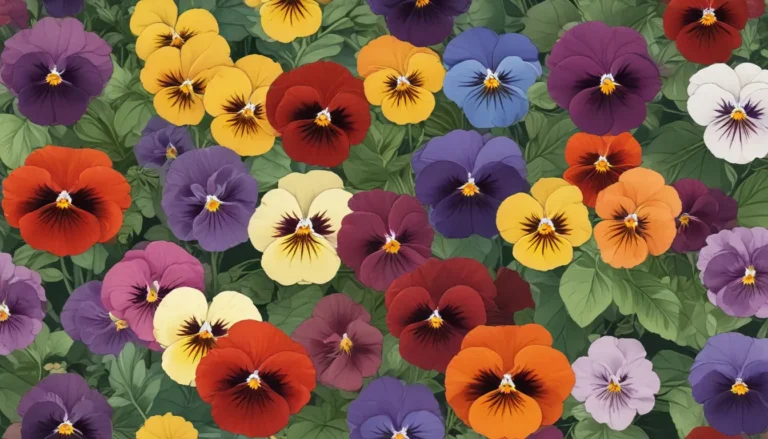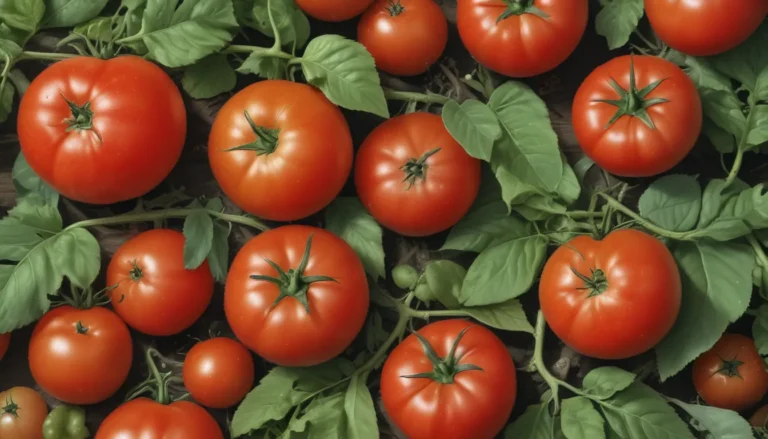A Comprehensive Guide to Growing and Caring for Ironweed (Vernonia)

Are you looking to add a touch of vibrant purple to your garden? Consider planting ironweed! This towering wildflower is a favorite among pollinators and can easily thrive in tough conditions. In this article, we will explore everything you need to know about growing and caring for ironweed, also known as Vernonia.
What Is Ironweed?
Ironweed, a member of the Asteraceae family, is a hardy perennial known for its bright purple to pink flowers that resemble pom-poms. With approximately 22 species native to North America, ironweed is a versatile plant that can grow in a variety of habitats. These plants are resistant to herbivores due to the unpalatable chemicals in their leaves, making them an ideal choice for wildlife gardens.
Cultivation and History
Ironweed has a long history of medicinal uses, with indigenous tribes using it to treat various ailments. Today, some species are being explored for their potential as oil crops and anti-inflammatories. This plant has a rich cultural and horticultural background, making it a valuable addition to any garden.
Ironweed Propagation
To grow ironweed in your garden, you can choose to start from seed, cuttings, or divisions. Collecting seeds from wild plants is a cost-effective way to establish this native flower. Alternatively, you can propagate ironweed through cuttings or by dividing mature plants. Each method has its benefits and can be tailored to your gardening preferences.
From Seed
If you decide to start from seed, collect mature seeds in the fall and sow them in a prepared garden bed. Mimicking the natural germination process will increase your chances of success. Keep the seeding area free from weeds and water regularly to encourage healthy growth.
From Cuttings
Propagating ironweed from cuttings is another option. Take soft, pliable growth from the plant and root them in a moist medium. With proper care, these cuttings will develop strong root systems and can be transplanted into the garden.
Via Division
Dividing mature ironweed plants is a simple way to propagate new growth. By carefully separating the root mass, you can create multiple plants to expand your garden. Divisions can be done in the spring or fall, depending on the plant’s growth cycle.
Transplanting
Purchasing nursery starts is a convenient way to establish ironweed in your garden. Site your plants in a sunny location with rich, moist soil. Follow proper planting techniques to ensure the best start for your new additions.
How to Grow Ironweed
Ironweed is a low maintenance plant that thrives in zones 4 to 9. While it can tolerate a variety of soil conditions, it prefers full sun and moderately moist soils. Watering during dry spells and top-dressing with compost in the spring will help ensure healthy growth. Whether in a rain garden or a flower border, ironweed is a versatile plant that can adapt to different environments.
Growing Tips
- Plant in average to rich, moist to dry soils.
- Provide plenty of space for mature plants to spread.
- Site in a location with full sun.
- Water well during prolonged dry periods.
- Top dress with compost in the spring if growing in poor soil.
Pruning and Maintenance
Ironweed is a tough plant that requires minimal care. While some gardeners may choose to remove browned stems and dead flower heads, leaving these can provide habitat for beneficial insects. Self-seeding can occur, so be mindful of removing spent flower heads to control growth. Dividing mature plants in the spring or fall can also help manage the size of your ironweed.
Ironweed Species and Cultivars to Select
There are several species and cultivars of ironweed available to home gardeners, each with its unique characteristics. From the compact ‘Arkansana’ to the giant ‘Gigantea,’ there is a variety of options to choose from. When selecting cultivars, be aware of pollenless traits that can impact pollinators and wildlife.
Managing Pests and Disease
Ironweed is relatively resistant to pests and diseases, making it a hassle-free option for gardeners. With few diseases and herbivore-resistant leaves, ironweed requires minimal intervention for optimal growth. However, occasional issues like powdery mildew and rust can occur, but these can be managed with proper care and maintenance.
Herbivores
Ironweed’s bitter leaves deter herbivores, ensuring minimal damage to the plant. Insects that rely on ironweed for food are typically harmless and help support the plant’s ecosystem.
Insects
While ironweed attracts a variety of insects, most do not cause significant damage to the plant. Beneficial insects and pollinators are essential for maintaining a healthy garden ecosystem.
Disease
Powdery mildew and rust are the most common diseases that can affect ironweed. Proper watering, soil conditions, and spacing can help prevent these issues. Treatments like neem oil can be used if necessary, but they are generally not required.
Best Uses for Ironweed
Ironweed is best suited for native plant and wildlife gardens, where it can attract a diverse range of wildlife. From birds to butterflies, ironweed provides food and habitat for numerous species. Its showy purple flowers are not only visually appealing but can also be used in cut flower arrangements.
Quick Reference Growing Guide
- Plant Type: Herbaceous flowering perennial
- Flower/Foliage Color: Purple to dark pink/deep green
- Native to: Africa, North America, South America, Southeast Asia
- Tolerance: Drought, deer, diseases, poor soil
- Hardiness (USDA Zone): 4-9
- Maintenance: Low
- Bloom Time: Late summer to early fall
- Soil Type: Organically-rich, moist loam
- Exposure: Full sun to part afternoon shade
- Soil pH: 6.0-7.0
- Time to Maturity: 2 years
- Soil Drainage: Moderate to moist
- Spacing: 2-4 feet or more
- Attracts: Bees, beetles, birds, butterflies, hummingbirds, wasps
- Planting Depth: Surface of the soil (seeds), or root ball even with the ground (transplants)
- Uses: Garden bed, naturalized areas, wildlife garden, rain garden, cut flower.
- Height: 2-12 feet, depending on species
- Spread: 2-5 feet, depending on species
- Water Needs: Moderate
- Genus: Vernonia
- Common Diseases: Powdery mildew, rust
Nothing Tougher than Ironweed
In conclusion, ironweed is a versatile and resilient plant that can thrive in a variety of conditions. Whether you choose to grow it from seed, cuttings, or divisions, ironweed is a low-maintenance option for any garden. Its vibrant purple flowers attract pollinators and wildlife, making it a valuable addition to native plant gardens. Consider adding ironweed to your garden for a touch of late summer color and an eco-friendly landscape.
Do you have experience growing ironweed in your garden? Share your stories and tips in the comments below. For more information on related wildflowers, check out our guides on Spotted Joe-Pye Weed, Bee Balm, and Rosinweed.
Let ironweed be the star of your garden this season!





